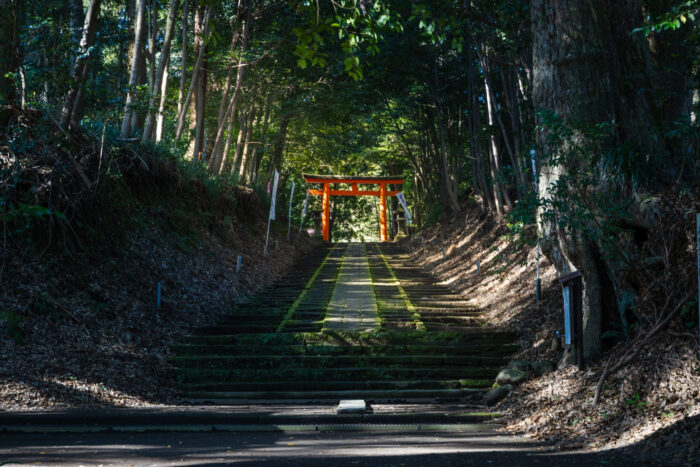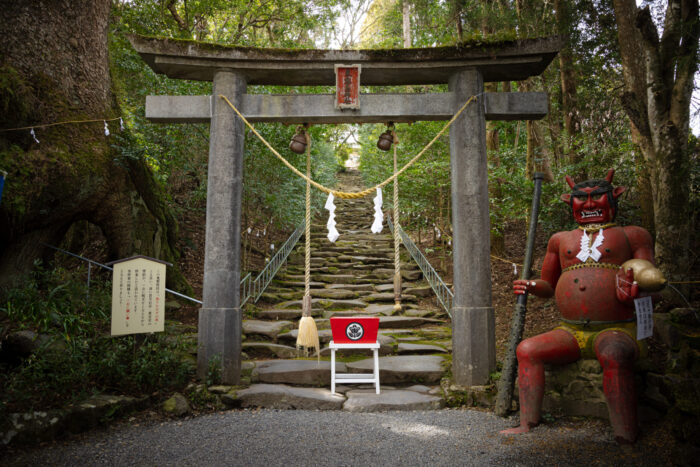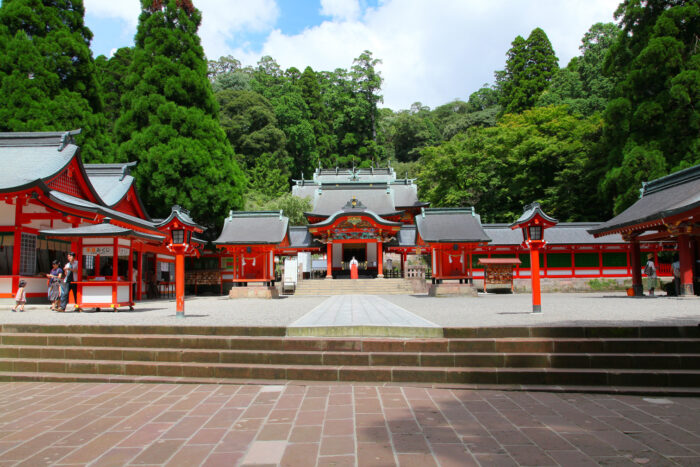Kirishima Geopark is an area centered on the Kirishima Mountains, which is a group of more than 20 active volcanoes lying on top of each other. Other than the Kirishima Mountains, there are also a variety of volcanic landforms to visit in the surrounding area, including multiple calderas and Shirasu plateaus.
Volcanic activities not only create landforms, but also various natural environments and ecosystems, and blessings such as hot springs and spring water.
Volcanoes have also influenced lifestyle and culture at the foot of the mountains. The influence of volcanoes can be seen in the stone culture and belief in volcanoes (shrines, etc.) that remain in various areas, as well as in the food culture of the region, including local specialties such as imo-jochu (sweet potato shochu) and tea.
A place where you can think about “what is a volcano” and experience the way of life and the culture of people who have lived at the foot of an active volcano, that is what Kirishima Geopark.

Caldera
A landform formed during an eruption, when a large amount of magma that had accumulated underground erupted all at once, causing the ground to plunge and sink into the hollowed-out beneath. A caldera eruption is a massive eruption of a magnitude such that once it occurs, it can destroy the surrounding civilization, and such eruptions occur once every few tens of thousands of years in Southern Kyushu.
Shirasu
The accumulation of large pyroclastic flows (a phenomenon in which volcanic ash, pumice, hot gasses, etc. flow in unison) that erupted during caldera eruptions. Shirasu is a folk name in Southern Kyushu and generally refers to the Ito Pyroclastic Flow deposit that erupted from the Aira Caldera about 30,000 years ago. A Shirasu plateau is the landform formed after a pyroclastic flow deposit that filled plains and valleys has been eroded.
Beliefs of People Living at the Foot of Volcanoes
-768x432.jpg)
Mi-ike Lake, a crater lake, and Takachiho Volcano.
The Ohachi Volcano, which has repeatedly erupted, is located behind the Takachiho Volcano.
The Ohachi Volcano, which has repeatedly erupted, is located behind the Takachiho Volcano.
Volcanoes of the Kirishima Mountains such as Ohachi Volcano and Shinmoedake Volcano have erupted throughout recorded history.
In particular, the Ohachi Volcano is one that has erupted repeatedly.
Many shrines can be found at the foot of the Kirishima Mountains. Among them, the six shrines surrounding the Ohachi Volcano are called Kirishima-rokusha-gongen.
Each of the six Kirishima-rokusha-gongen has its own history of being repeatedly burned down and relocated due to repeated volcanic eruptions. This history has left us with lessons on how to deal with volcanoes.
-scaled-e1713513854523.jpg)
Sano Shrine
The shrine was repeatedly burned down and relocated due to the eruption of the Kirishima Mountains. In the precincts of the shrine, there is a stone monument inscribed with the story of Shinmoedake Volcano 2011 eruption. The inscription also records events such as the temporary relocation of the deity of Sano Shrine to the Kirishima-mine Shrine.
-scaled-e1713513890291.jpg)
Kirishima Higahi Shrine
Another shrine that was repeatedly burned down and relocated due to the eruption of the Kirishima Mountains. It is located on a hill overlooking the Mi-ike Lake. The summit of Takachiho Volcano is the enclave precincts of Kirishima Higashi Shrine, and the Amanosakahoko enshrined there is the treasure of the shrine.

Kirishima Mine Shrine
It is said that the first shrine buildings were located between Takachiho Volcano and Ohachi Volcano, but it was repeatedly burned down and relocated due to the eruptions of Ohachi and Shinmoedake volcanoes. At the end of the 19th century, the shrine was enshrined together with Hinamori Shrine, which is also a Rokusha Gongen, so there are now five locations with Rokusha Gongen.

Tsuma Kirishima Shrine
The shrine is located at the eastern end of Nagao Volcano, southeast of the Kirishima Mountains. The shrine buildings were frequently destroyed by fire due to the eruption of the Kirishima Mountains, but were rebuilt each time. Nagao is a volcano that was active in an older age than the Kirishima Mountains, and there are long stone steps built of rocks that appear to be volcanic rocks from this volcano.

Kirishima Jingu Shrine
It is believed that the shrine was first built around the 6th century between Takachiho Volcano and Ohachi Volcano. Later, the shrine was repeatedly relocated due to eruptions of Ohachi Volcano, and the present location was built in the 15th century. The shrine buildings were constructed by building a stone wall on the lava slope created by the eruption of Ohachi Volcano.